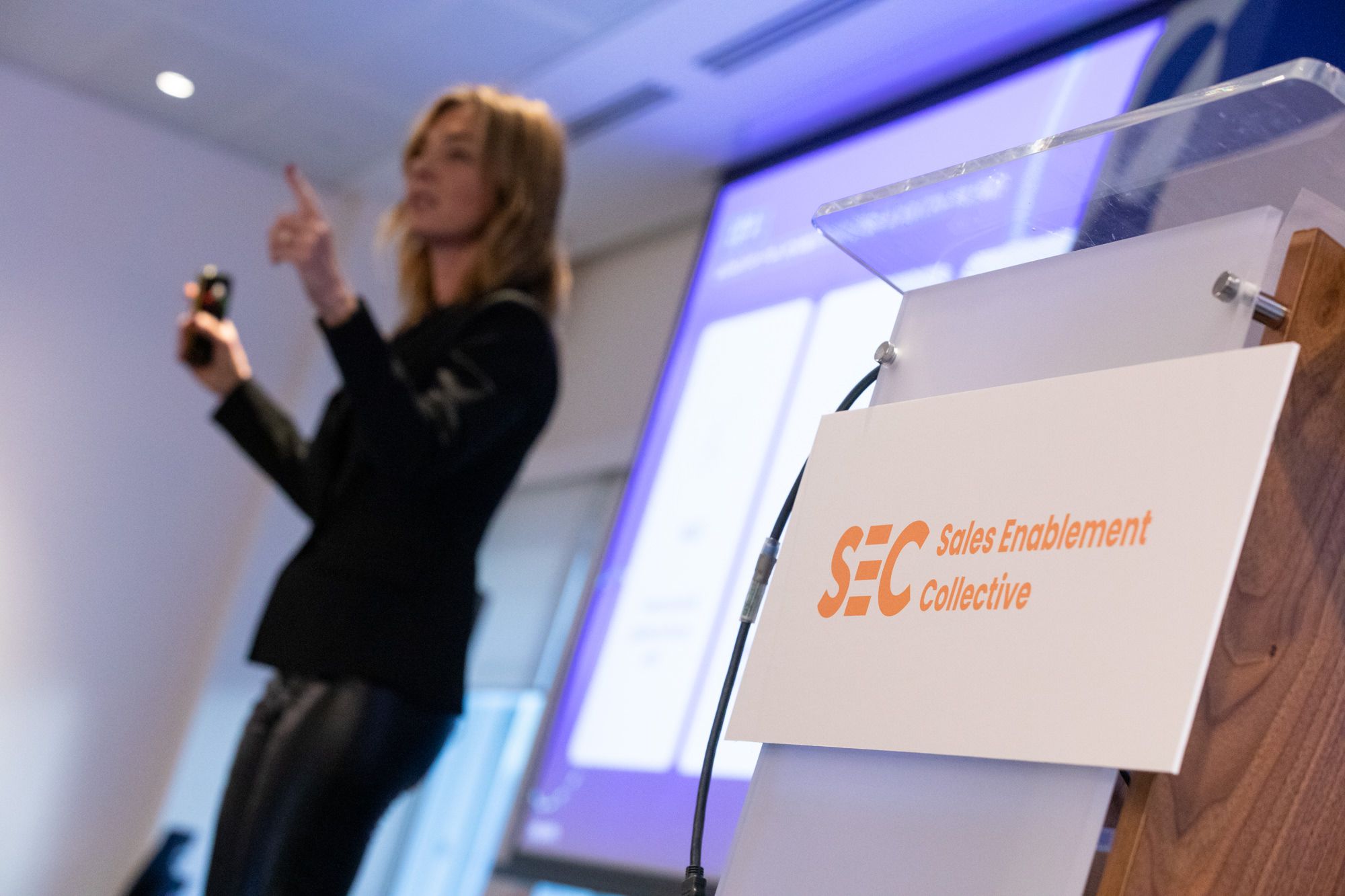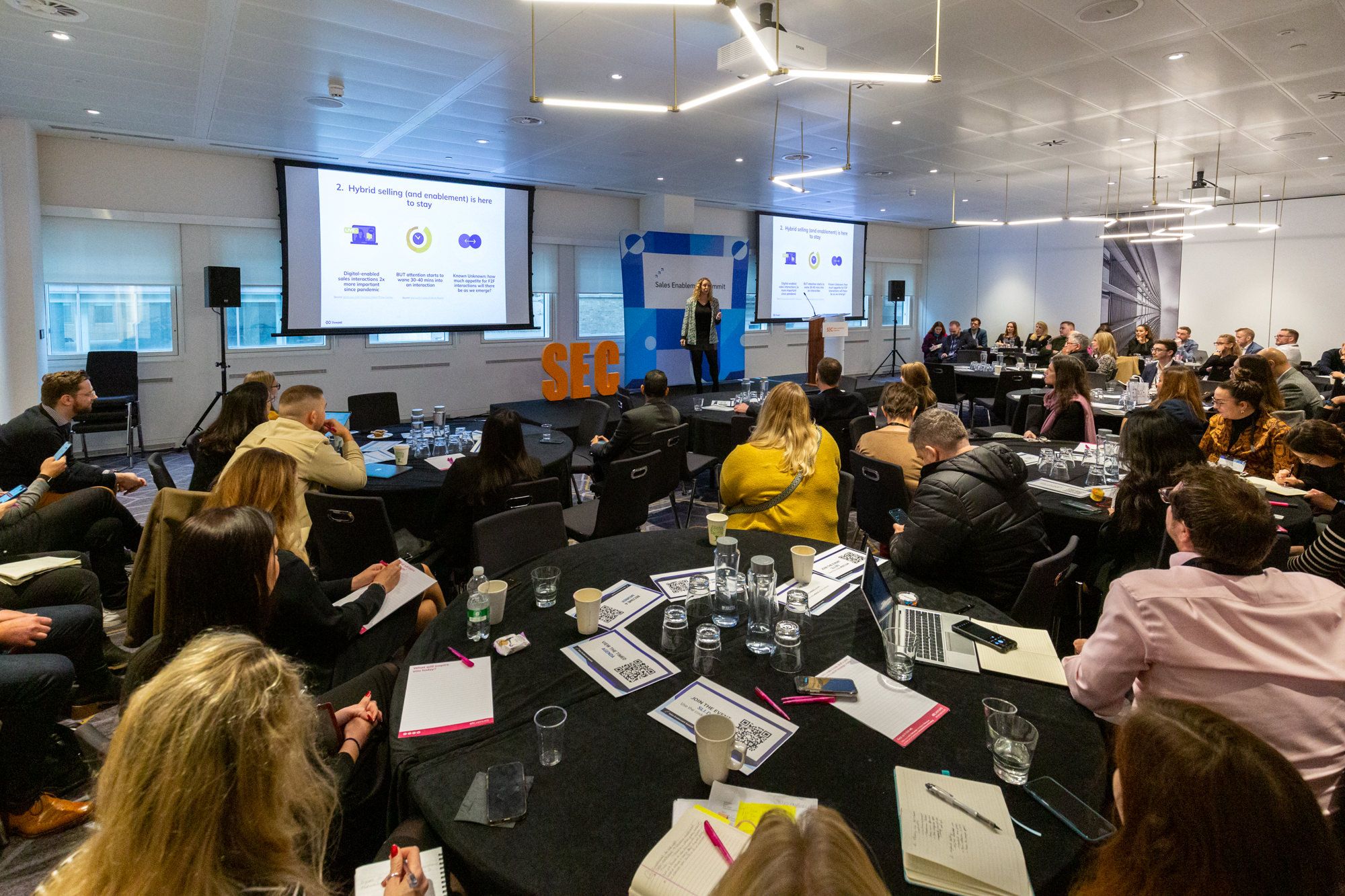Kat Hartigan (VP of International Sales, Clari) and Johnny Fianu (Global Head of Revenue Operations, ComplyAdvantage) held this discussion at the Chief Revenue Officer Summit in December 2022.
Find information on all our upcoming events here.
Kat
I'm Kat Hartigan, I'm the VP of Sales for Clari. I'm thrilled to be joined by Johnny Fianu, who will introduce himself further down in the article.
In this article, we'll talk about running revenue - but what is does that mean?
It's how you best govern and optimize your end-to-end revenue process to drive predictable results. I think we can all agree that this is an important topic given the macro headwinds most of us are facing.
It's particularly tough in Europe at the moment; there are so many factors to consider, from the geopolitical forces of Russia invading Ukraine to rising interest rates, inflation, subdued economic growth, and the repercussions of Brexit. The list goes on.
I read recently that during these tough downturns, only 10% of companies come out stronger. So we’re going to talk about what makes a company part of that 10 in this article%.
Companies often only have half a strategy to weather a downturn - what does that half look like?
It's really over-indexing on cost-cutting, driving efficiencies, and the bottom line. But this is only half of the picture.
In this article, we'll talk about what the full strategy looks like. It's very much revenue precision-based, and focused on mitigating leak and risk.
Quick links:
- Overcoming challenges in the revenue process
- The importance of mining growth as a revenue leader
- Best practices for mitigating revenue leak
- Predictability is at the heart of sustainable growth
- 3 key ways to optimize governance and collaboration
Let's dive in with Johnny. 👇
Johnny
Hi, I'm Johnny and I head up Revenue Operations at ComplyAdvantage, a financial crime scale-up. We've been around for nine years or so, and I've been with the business for two of those.
When I joined we had around 250 employees, now we have around 500. Our ARR has more than doubled, so we’ve seen some really crazy growth.
Some of those tailwinds include that we're working in a regulated market. What a transaction actually means has changed. It's no longer just sending money to each other, it's NFTs, art, property, etc.
In terms of the headwinds, our customers are facing the same issues that we're all concerned about in regard to the macroeconomic environment, which I think really puts a spotlight on revenue operations as a whole.
What RevOps means to me is the support right the way across the commercial function. So as a SaaS business, that’s everything from the top of the funnel, right the way through to renewal.
I term it ‘lead to renewal.’
Each of those departments has systems, data, and processes, and the main bet with RevOps is if you can optimize all of those, then you can more effectively and efficiently meet that goal.
Most recently, I've taken on the EMEA SDR team as well so I've been able to pair what's happening there with the systems and data approaches that we take.

Overcoming challenges in the revenue process
Kat
Here at Clari, we talk a lot about whether you’re going to meet, beat, or miss on revenue. And I think that in tough economic times, this is super important. It’s detrimental if you’re missing your number.
Johnny, what are the main hurdles that you're facing in your revenue process?
Johnny
I think this concept of a revenue process deserves a little bit of a primer. I like how Clari has also put a label on it, the run revenue aspect.
For me, that means a coming together of the go-to-market strategy, the actual sales motion, and the prospecting methodology that you put in.
It’s looking at that go-to-market strategy and actually understanding what your target segments and target accounts look like and how you’re going to meet those, and looking at your different personas and understanding who they are.
As we've all been hearing from many different events and gatherings, the buying committee has changed.
When I was at LinkedIn, they shared that there are 13 people and the CFO involved in every deal. Suddenly, the personas that you're looking at have increased, so structuring that go-to-market motion is a key part of your revenue process.

The other side of it is the sales prospecting.
What’s your methodology? What’s actually the right size for your business?
Now in terms of challenges across those two areas, we've had to look at the go-to-market piece and adjust it - the macroeconomic environment has demanded it.
We've got to get laser-focused on which segments are actually working for us and which personas are going to be involved in the deal going forward.
So it becomes about adjusting that and understanding how that relationship and handover between an AE and an SDR starts to work more effectively in this environment.
One of the things we've been trying to drive is encouraging the AEs to actually start to pull a little bit more weight on that side of things, and not just wait to get fed from the SDR.
For example, we've seen marketing budgets reducing and inbound reducing, so you can't rely upon that as much.
With right sizing, our go-to-market motion has been one of the challenges we've been tackling. On the sales motion side of things, our typical market is mid-market, banks, and FIS, but the product is maturing and we're stretching towards enterprise.
But even without that, you need to get more qualified. So driving greater and deeper qualification has been a genuine challenge.
18 months ago, reps were tripping over and bringing the deals in. There was lots of money sloshing around for FinTechs. It was easy. Now it's much harder, so I'd say those are the two things that we're really focused on.

The importance of mining growth as a revenue leader
Kat
From a general standpoint, I've been doing a lot of reading into what's critical in these times, and the question is: how do you review your revenue process and systems very early on to understand where the pain and impact are being felt?
In one of the articles I read, it said that the best revenue leaders mine the growth underneath their feet.
This means that they apply a geological hammer to every customer segment and market, and really go deep and understand where:
- a) There's the most risk, and
- b) the most opportunity for upside
Partner with your marketing team to really understand where you need to divert and pivot your spending. This disaggregation gives you so much power and also points to the fact that a broad brush approach during these tough economic times just simply doesn't work.
I think you really need to get granular.
It also reminds me of the discussion we had around maintaining that investment and top of funnel.
I work very closely with our Head of Marketing, and you have to make those difficult decisions about whether we can afford to maintain our top line and top of funnel presence whilst getting super savvy on driving efficiencies.
We also talked about measuring performance better than we ever did, so we can really understand the ROI of every single line item and spend.

Johnny
I love the phrasing around mining the gold underneath your feet. That's really important - zeroing in on which segments and areas are proving profitable for you and doubling down.
I also think the marketing piece is a really great point.
My brother works for Nestlé in the marketing department, and he shared some information with me about how companies that are able to maintain that higher level of marketing spend come out much stronger.
This is because they've been able to maintain their presence in the market whilst others have retracted.
As you exit that period, the ones which have actually maintained or even increased spend have an advantage.
It's easy to say, but then you’ve got to get practical around those two sides mentioned at the start. You have to look at costs, and you have to look at doubling down on the opportunity.
Best practices for mitigating revenue leak
Kat
At Clari, we talk a lot about revenue leak. I've become quite obsessed with the expression actually, it's just so prevalent at the moment.
What is revenue leak?
It's revenue that you and your teams have earned but haven't captured.
Johnny, what's your advice to executives on how to mitigate revenue leak?
Johnny
It took me a little while to get my head around the concept because it meant quite a lot of different things, but I'll share an example of what really brought it home for us.
As our product was maturing, we went through a period of hyper-growth, but one of the areas that we weren't as good with at the start was having visibility into usage - how much the customer is using at any particular point in time.
We could dig in and find it, but surfacing that information automatically was a real challenge.
We'd be having conversations where the AE would just by chance speak to the CSM and find out that the client was actually 150% over.
Now, what's the value in having that conversation at 150% versus when they were at 50% or 70%? You go in and have a proactive conversation.
And that's the leak.
It's revenue that’s on the table. Your product is working well and delivering, but you just have no visibility into what’s actually going on.
What’s been transformative for us is customer success, and investing in that function is paramount.
Keeping that dollar retained is super important now.
You can see how it is in new business, it’s a bloodbath. If you can keep your customers, grow and expand, and reduce churn, then you're reducing that leaky bucket.

So for us, how do we get there? Well, the first thing was that we had to bring in systems that would gather the data properly and accurately.
We brought in configure, price, quote (CPQ) with Salesforce so that quote to cash piece was all now within the CRM. We also had to invest in the CS org and invest in solutions to support them.
So I'd say that getting data into one place and having a system to review the signals is one of the most important things.
There are a bunch of aspects to the CPQ system that you need to be aware of.
For example, your pricing needs to have some stability in it. We put a lot of effort into understanding and producing rate cards on every deal, so there were different tiers that a client could start to lock into.
In terms of the CPQ piece, we had to make sure that we captured the pricing and volumes for every customer. And then on the customer side, it's a pretty seamless experience.
As long as they've got access to reporting from their side and they can confirm it, then it's all good.
So it was a mixture of ensuring that we had the right data points within our main system. We had to do a lot of work around our pricing and our rate cards as well in order to bring those two together.
We have everything coming into our data lake and we use Looker as our reporting platform to then see when customers are trending.
We're going to look at over-utilizing or even the reverse, under-utilizing; there's a churn signal there as well.

Predictability is at the heart of sustainable growth
Kat
In the context of an economic downturn, how do you drive predictable results?
Johnny
Being VC-backed, there’s a laser focus on sustainable growth, It's demanded. It’s required. Not crazy growth and you flame out, we're talking about sustainable growth.
At the heart of sustainable growth is predictability.
You have to understand what the various levers are and how they're going to react when you pull them and push them in different ways.
Now, how do you foster and drive predictability in this uncertain market?
I think the key is adaptability. Adaptability is responsiveness to change. You're adapting and responding to what you’re seeing, and that involves having data, looking at signals, ingesting them, and interpreting them.
The way that we’re really tackling this and dealing in this market is test, learn, iterate.
We build squads around particular challenges in the business, and then we obsessively look at the signals to understand if a particular approach or hypothesis that we have is working or not.
If it is, let's double down, and if it's not, let’s change it.
Kat
It's clear that the best revenue leaders really understand how to better optimize their historical data to inform their decisions and become more predictable.
I was reading an article that stated that out of the highest growth businesses, the most successful organizations (startups, and VC-backed) only half deem themselves to be extremely efficient as it relates to optimizing that historical data to inform their Go-Forward strategy, and just under a third of the slower growing businesses do.
That's a concern, as there's a tonne of opportunity out there.
But as a leader, historically I've always relied on a big, very intelligent revenue operations team to serve me up a lot of analytics as it relates to the past, and therefore my projections for the future.
Now I can pull my historicals up at the click of a button, which then informs where I invest and divest my time.
It's a very powerful tool in this environment.
3 key ways to optimize governance and collaboration
Kat
Johnny, we talk a lot about governance and collaboration at Clari. It would be great to understand how you optimize for that at ComplyAdvantage.
Johnny
It’s really at the heart of trying to drive change, which I think comes down to people.
You have to have the right leaders in place who will foster, promote, and drive that mindset that we've discussed, which is to be adaptable, to understand and be responsive to the market and your customer's challenges, and to be empathetic.

After that, I believe it's transparency around what you’re trying to drive.
What are your rulesets and guidance in terms of how reps work with each other, how systems are used, and the expectations you have from your leaders and colleagues around how they're going to support different elements of your mission?
And then it's the systems and the enablement piece, which is one of the hardest things to drive, especially in this market where there’s a lot of technology.
The tech stack that we have is a bit ridiculous sometimes, with the amount of support and systems that the sales team has access to.
I think that's going to be changing, there's a backdrop of rationalization.
But it really puts into focus the requirement around enablement and making sure that there’s coherency in terms of how teams use it and the objectives that you're actually trying to drive.
So the three keys to optimizing governance and collaboration for me are:
- People,
- Being really transparent with your guidance, approach, requirements, and expectations,
- And then your systems and enablement.
Kat
There's definitely an air of tool fatigue at the moment, so I think rationalization and consolidation are definitely important to highlight. Trying to optimize for one system that can unify your go-to-market optimization is critical too.
Thank you for reading, we hope you found this helpful.

Join 5,000+ sales enablers in SEC's free Slack group! Start networking, idea-sharing, and asking questions today.





